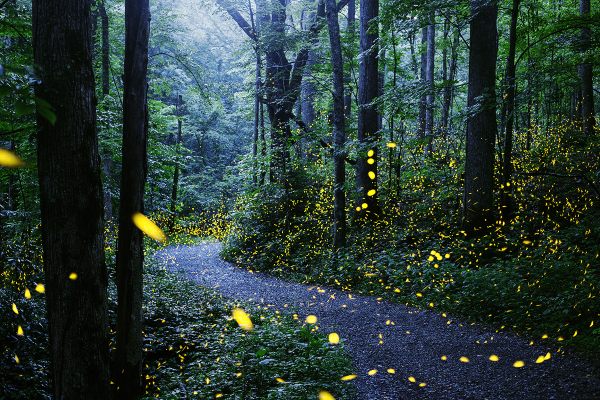Found: The Biggest Bee in the World
It had been 40 years since the last sighting in Indonesia’s Maluku Islands.

The humid air in the northern Maluku Islands of Indonesia, also known as the Spice Islands, is heavy with nutmeg and clove. These lowland rainforests were the backdrop for the recent rediscovery of a remarkable animal—Wallace’s giant bee, known locally as raja ofu, meaning “king bee,” and with good reason. Wings spread, the largest specimens (who are actually queens) can be the size of an extra large chicken egg, and they sport jaws like pliers.
Wallace’s giant bee—the world’s largest—was first documented by science in 1858, by English entomologist Alfred Russel Wallace, well known for independently arriving at the theory of evolution through natural selection alongside Charles Darwin. Although the insect would later be named after him, Wallace didn’t even identify it as a bee at the time. In a record of his journeys, The Malay Archipelago, he described it as “a large black wasp-like insect with immense jaws like a stag-beetle.” He handed some 100,000 insect, bird, and animal samples—including this single female specimen—to various British research institutions. In 1861, British Museum entomologist Fredereck Smith confirmed not only that Megachile pluto, as he dubbed it, was a bee, but also that it is the very biggest of the world’s 20,000 known species. But it’s been a long time since one has been seen in the wild.
Wallace’s description sparked the curiosity of Clay Bolt, a natural history and conservation photographer who specializes in documenting bees native to North America. “I’d wanted to go [to the Malukus] from the perspective of seeing these species that were integral to the theory of evolution,” he says. Along with his friend, entomologist Eli Wyman, manager of an insect lab at Princeton University, he set off to Indonesia in January 2019 through the nonprofit Global Wildlife Conservation’s “Search for Lost Species” program, which seeks out creatures feared lost because they have not been sighted in a long time.

The last record of a live giant bee was from 1981, by American biologist Adam Messer. It’s not clear why it’s been so long since the bee has been seen last seen. The northern Malukus are difficult to reach, and the bee, unlike many familiar social varieties, is a more solitary sort. They might share a nest with one another, one with a single entry point, like an apartment complex, but females nest alone while potential mates must wait outside. She collects pollen to form a nutritious ball for her offspring, then seals herself inside to protect her single egg.
M. pluto is so rare that less than a year ago, a specimen of sold for over $9,000 on eBay. Bolt and Wyman used Messer’s accounts of his sighting to narrow their search. It helps that 80 percent of the forests in the northern Malukus are still intact. (Elsewhere in Indonesia, palm oil plantations for the production of biofuels have cleared millions upon millions of acres of forest, wiping out wildlife habitat and contributing climate change.)

Wallace’s giant bee nests in termite mounds that grow on trees, and its formidable jaws are used to scrape tree resin, which it uses to line its nest, waterproofing it against the rainforest climate and protecting it from the termites. For a week, Bolt and Wyman peered into about 30 termite mounds. Just as they were beginning to lose hope, Iswan, an Indonesian guide and conservationist, spotted an unusually low mound, about eight feet above the ground. Iswan later said that, tired and hungry, he nearly passed by the mound without mentioning it. But, clambering up an embankment he spotted a perfectly round hole, where he saw something move. Bolt followed with his headlamp, and shone a light on the first bee of its kind to have been seen in nearly 40 years.
In order to photograph her, they gently tickled her with a blade of grass. She walked out of her nest into a box where they could photograph her as she flew around. “The sounds of the wings was absolutely amazing. It was a deep, slow thrum,” says Bolt. “I’ll never forget it.” These photographs are the first step toward a larger goal—beginning to work more closely with locals to search for more nests and promote conservation in the region. “Just knowing that this bee’s giant wings go thrumming through this ancient Indonesian forest helps me feel that, in a world of so much loss, hope and wonder still do exist.”


















Follow us on Twitter to get the latest on the world's hidden wonders.
Like us on Facebook to get the latest on the world's hidden wonders.
Follow us on Twitter Like us on Facebook